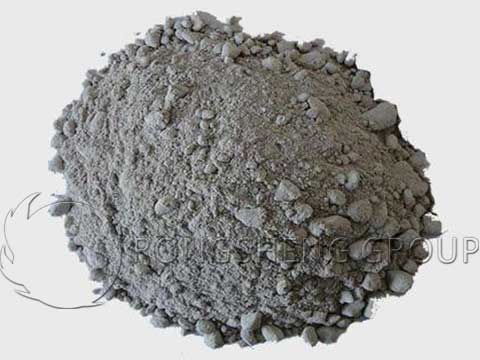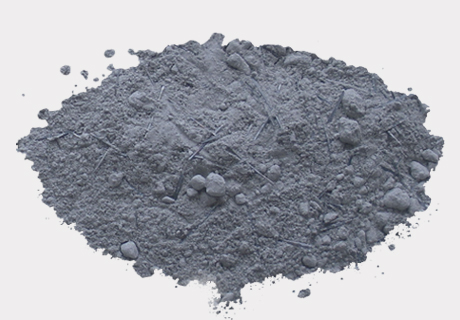Rongsheng Unshaped Refractory Materials Manufacturer is a powerful manufacturer and seller of refractory materials. Rongsheng Environmental Protection’s fully automatic unshaped refractory material production line provides a reliable guarantee for the efficient and long-life operation of high-temperature industrial furnace linings. Among them, the application of alumina-magnesium spinel castables is becoming increasingly widespread. Contact us to get free samples and quotes. This article will introduce the practical application of unshaped refractory materials, alumina-magnesium spinel castables.
Application and Construction of Aluminum Magnesium Spinel Castables
Tundish aluminum-magnesium castables and ladle aluminum-magnesium castables are both based on aluminum-magnesium spinel materials. There are also steel fiber aluminum-magnesium castables, which are the main working layer refractory castables often used in steel plants. Because they are more convenient during construction, they are welcomed by steel mills and enterprises. However, sometimes due to changes in the construction conditions of alumina-magnesia spinel castables, some problems may occur, affecting the use effect and life of the furnace lining.

Problems and Solutions in the Construction of Aluminum-Magnesium Spinel Castables
Solidification time is an important factor affecting the construction of aluminum-magnesium castables. The ambient temperature has a great influence on the solidification time of aluminum-magnesium castables, especially in summer. When the ambient temperature exceeds 35°C, aluminum-magnesium castables tend to solidify quickly, which brings a series of problems to the casting construction:
①Increased the labor intensity of construction workers. When the ambient temperature is high and the solidification time of the castable is shortened, the rheology of the castable itself becomes worse. Especially when the castable is rapidly solidified, the castable released from the mixer has no time to enter the bag, and has solidified on the upper surface of the bag and the launder. This makes feeding castables into the wall more labor-intensive.
②Influence the service life. In hot summer, workers often add more water to increase the fluidity of castables. Due to the increase in water consumption, the porosity of the castables increases and the strength decreases after drying. In addition, when the ambient temperature exceeds 40°C, even if more water is added, the castable will still tend to set quickly, affecting the service life.
③ Difficulty in rebirth. Under normal circumstances, after the ladle is poured, it needs to be left for 24 hours before it comes out. However, in the hot summer, due to the shortened solidification time of the castable, the castable and the tire package are tightly stuck together, making it difficult to remove the tire.
Therefore, whether it is from the perspective of reducing the labor intensity of workers, or creating a good condition for pouring construction, extending the service life of castables, and reducing usage accidents. It is necessary to fundamentally adjust the solidification time of aluminum-magnesium castables to meet the on-site usage requirements. After a period of research, it was found that lignosulfonate can change the setting time of castables, so that the initial setting time of aluminum-magnesium castables can be extended to more than 30 minutes even when the ambient temperature exceeds 35°C. This completely solves the problem of short solidification time of aluminum-magnesium castables in summer. It should be noted that the solidification time of aluminum-magnesium castable is related to the amount of lignosulfonate added. On the premise of meeting construction requirements, the smaller the amount added, the better. In addition, as the seasons change, the amount added must also be adjusted accordingly. Generally, a large amount is added in summer, and less or even no amount is added in winter. If more lignosulfonate is added in winter, the final setting time of the aluminum-magnesium castable will be extended, which will cause material collapse during normal operation, which is harmful.

Problems and Solutions when Using Aluminum-Magnesium Spinel Castables
(1) Cracks.
Aluminum-magnesium castables crack during use, reducing their service life. When the ladle was used for 5 heats, cracks began to appear on the inner wall of the ladle, covering the entire ladle wall. As the number of uses increased, the cracks became deeper and wider. When more than 20 furnaces were used, they had to be discontinued. To solve the problem of castable cracks, some methods have been tried:
① Replace the bauxite clinker calcined in the vertical kiln with bauxite calcined in the down-flame kiln. In this way, the sinterability and bulk density of alumina are increased. It was thought that the volume shrinkage caused by incomplete calcination of the alumina and re-sintering during use could be reduced, but this was not successful.
② It is believed that the cracks are related to the total amount of fine powder in the castable. Trying to reduce the fine powder in the castable to less than 30% (mass fraction), or as low as 25%, did not solve the problem.
③ Solve the cracks starting from a chemical reaction. Because Al2O3 and MgO can generate alumina-magnesia spinel under the action of high temperature, it is accompanied by large volume expansion. After a series of tests and adjusting the ratio of Al2O3/MgO, satisfactory results were not achieved. Even when the MgO content is too high, peeling occurs instead.
Finally, the following method is basically used to solve this problem:
- ① Increase the upper limit of aggregate particle size from the original 15mm to 25mm. Among them, the 20-25mm part accounts for 7.2% (mass fraction) of the total. This is due to the presence of oversized particles, which not only act as a skeleton but also change the direction of long cracks, helping to prevent the expansion of internal cracks.
- ② Add zircon powder to the matrix. This zircon powder is produced in Australia, and its ZrO2 content is about 66%. Since ZrO2 itself has a high melting point, it can absorb CaO in the slag during use, react to generate CaZrO3 with high melting point and high corrosion resistance, and seal pores and cracks. At the same time, due to the presence of zircon, micro-crack structures can also be formed in the castable to improve the high-temperature performance of the castable.
- ③ Reduce the dosage of activated silicon carbon powder as much as possible. Since the quality of silica fume powder is unstable and a large amount is added, a lot of impurities will be brought in, which is detrimental to use. Controlling the amount of silica fume in the castable below 1.5% (mass fraction) will achieve better results.
- ④When pouring, it is also critical to strictly control the amount of water added and ensure uniform vibration.
(2) Peeling
Spalling is also one of the common problems in the use of aluminum-magnesium castables. It is the result of uneven stress within the castables. If A12O3 and MgO in the matrix are affected by high-temperature molten steel during use, they will easily react to form MA spinel, accompanied by a large volume expansion. If this reaction is very intense, structural peeling will easily occur under the impact of molten steel. Therefore, to control this spinel reaction in the matrix, it is necessary to control the content of each component, especially the content of MgO, which is critical. If the MgO content is too high, in addition to the spinel reaction, it also has a large linear change rate, resulting in volume expansion, which will also promote spalling. Generally, the content of magnesia is controlled at about 10% (mass fraction), and the effect is better.
Pouring construction also has an impact on the occurrence of spalling. In this regard, the amount of water added must be strictly controlled and uniform vibration must be achieved. If the amount of water added is too large and the green body vibrates unevenly, the porosity will increase, and steel drilling will easily occur during use, causing the wall of the bag to peel off.
(3) The slag line erodes quickly
Due to the complex composition of steel slag, it is easy to react chemically with the castables, causing the castables in the slag line to be prematurely corroded, resulting in the slag line and the wall being unable to be used simultaneously. This is also a problem encountered in actual use. On the premise of significantly increasing costs, some methods are adopted:
- ① Specially configured slag line material is used for pouring the slag line parts. The raw materials of slag strand materials are improved to a higher level. For example, the bauxite powder uses high-quality high-alumina bauxite clinker with ω (A1203) = 86% and a bulk density of >3.2g/cm3.
- ② Add some pre-synthesized aluminum-magnesium spinel to the slag strand material and use a high MgO ratio, which can improve the ability to resist alkaline slag.
- ③ Reduce the dosage of active silica fume and control it to around 1.0% (mass fraction).
- ④Strictly control the amount of water added and vibrate evenly during pouring. Through these measures, the lifespan of the slag line and the package wall is basically synchronized.
Measures and Methods for Efficient Use of Aluminum-Magnesium Spinel Castables
- ①Retarding technology is one of the key technologies in the construction of magnesium-aluminum castables. According to changes in seasons and ambient temperature, retarders such as lignosulfonate should be added in a timely manner to make the setting time meet the needs of pouring construction.
- ② Adding some oversized aggregate and zircon powder to the castable is very beneficial to inhibit the occurrence of cracks.
- ③ The slag line uses a high MgO ratio and adds some pre-synthesized aluminum-magnesium spinel powder to improve the slag erosion resistance of the slag line.
- ④ During pouring construction, strictly control the amount of water added and vibrate evenly, which is of great significance to increase the service life of the castables.
To ensure the efficient and long-life operation of the ladle lining, it is not only necessary to purchase high-quality aluminum-magnesium spinel castable products, but also strictly follow the construction instructions and adjust the formula of the aluminum-magnesium spinel castable according to the actual construction conditions. Rongsheng unshaped refractory material manufacturers can customize the formula of refractory castables according to the actual working conditions of customers. To improve the service life of high-temperature furnace linings and save production costs for enterprises.

